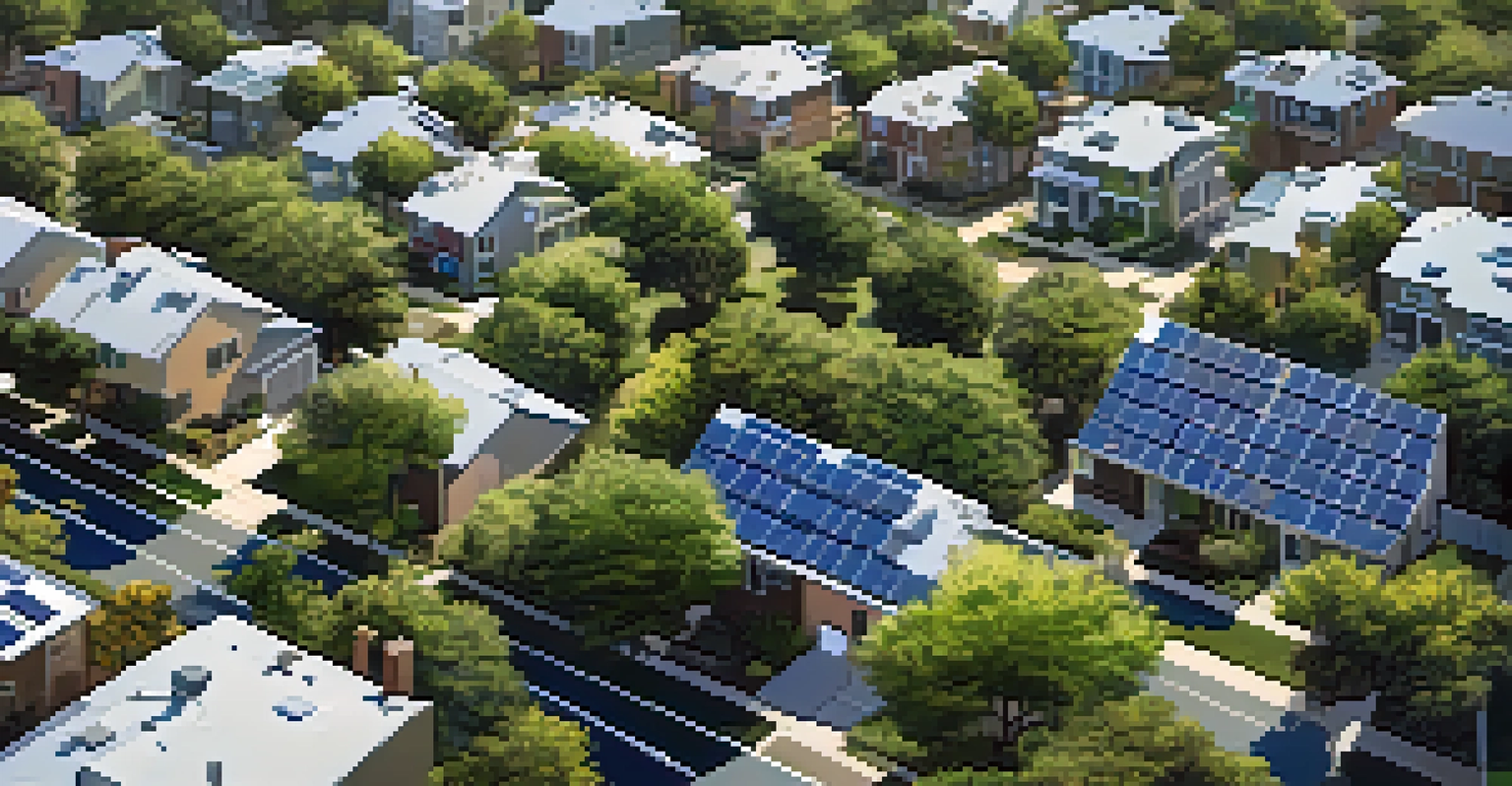Climate Adaptation Strategies for Houston's Urban Environment

Understanding Climate Challenges in Houston's Urban Areas
Houston faces unique climate challenges due to its geography and rapid growth. With rising temperatures, more intense storms, and flooding, the city must adapt to these changes to protect its residents and infrastructure. Understanding these challenges is the first step towards developing effective adaptation strategies.
The environment is where we all meet; where we all have a mutual interest; it is the one thing all of us share.
The city’s coastal location makes it especially vulnerable to hurricanes and rising sea levels, which can overwhelm drainage systems. Additionally, urban heat islands exacerbate heat waves, impacting public health and energy consumption. By acknowledging these issues, Houston can proactively seek solutions that benefit both the environment and its citizens.
Recognizing the interconnectedness of climate impacts helps in designing comprehensive strategies. For instance, addressing flooding not only protects homes but also preserves green spaces that contribute to air quality and urban biodiversity.
Implementing Green Infrastructure for Flood Management
Green infrastructure plays a crucial role in managing stormwater and reducing flooding risks in Houston. This approach involves using natural systems, like parks and green roofs, to absorb rainwater, thereby decreasing runoff into drainage systems. By integrating green spaces into urban planning, the city can mitigate flood risks while enhancing quality of life.

For example, transforming vacant lots into community gardens or rain gardens not only beautifies neighborhoods but also helps manage water flow. These areas can capture excess rainwater and filter pollutants before they reach local waterways. Such initiatives promote community engagement and environmental stewardship.
Houston's Climate Challenges
Houston's unique geography and rapid growth lead to significant climate challenges like rising temperatures, flooding, and severe storms.
Additionally, the benefits of green infrastructure extend beyond flood management. They can improve air quality, provide habitats for wildlife, and offer recreational opportunities, creating a more resilient urban environment for all Houston residents.
Enhancing Resilience Through Urban Heat Island Mitigation
Urban heat islands (UHIs) are a significant concern in Houston, where concrete and asphalt absorb and retain heat. To combat this, the city can implement strategies like increasing tree canopy coverage and using reflective materials for buildings and pavements. These measures help cool urban areas, ultimately improving residents' health and comfort.
We won't have a society if we destroy the environment.
Planting more trees along streets and in parks not only reduces temperatures but also provides shade and improves air quality. Communities can work together to organize tree-planting events, fostering a sense of ownership and responsibility for the environment. This grassroots approach can lead to significant long-term benefits.
Moreover, educating residents about energy-efficient practices can further mitigate the UHI effect. Simple actions, like using energy-efficient appliances and reducing vehicle use during peak heat times, can collectively contribute to a cooler, healthier city.
Strengthening Houston's Infrastructure for Future Resilience
As Houston continues to grow, strengthening its infrastructure is vital for adapting to climate change. Investments in resilient infrastructure, such as upgraded stormwater drainage systems, can help manage increased rainfall and flooding. This proactive approach ensures that the city can withstand extreme weather events while maintaining essential services.
Reinforcing bridges, roads, and public transport systems is equally important. These upgrades not only enhance safety but also improve accessibility for all residents, particularly during emergencies. By prioritizing resilience in infrastructure planning, the city can better serve its growing population.
Green Infrastructure Solutions
Implementing green infrastructure, such as parks and community gardens, helps manage stormwater, reduces flooding risks, and enhances urban quality of life.
Additionally, incorporating climate projections into infrastructure development allows for long-term planning that aligns with future needs. By thinking ahead, Houston can avoid costly repairs and disruptions caused by climate impacts.
Integrating Climate Adaptation into Urban Planning Policies
Integrating climate adaptation into urban planning policies is essential for a sustainable Houston. By embedding climate considerations into zoning laws and land-use plans, the city can create a framework that promotes resilience. This proactive approach ensures that all new developments are designed with climate challenges in mind.
For instance, encouraging mixed-use developments can reduce reliance on vehicles, lowering greenhouse gas emissions. Furthermore, prioritizing affordable housing in flood-prone areas can lead to a more equitable approach to climate adaptation. By considering social equity, Houston can foster inclusivity in its climate strategies.
Collaborating with community stakeholders to develop these policies is crucial. Engaging residents in the planning process helps ensure that the strategies reflect their needs and fosters a sense of shared responsibility for climate action.
Promoting Community Engagement in Climate Adaptation Efforts
Community engagement is key to successful climate adaptation strategies in Houston. By involving residents in discussions about climate change impacts and potential solutions, the city can build a sense of ownership and collective action. Workshops, town halls, and online forums provide platforms for residents to voice their concerns and contribute ideas.
Moreover, fostering partnerships with local organizations can amplify these efforts. Collaborations with schools, nonprofits, and businesses can lead to innovative solutions and widespread community involvement. For example, local schools can integrate climate education into their curriculum, empowering the next generation to take action.
Community Engagement Importance
Active community engagement in climate adaptation discussions fosters ownership and collaborative efforts to address climate challenges effectively.
Ultimately, engaging the community creates a shared vision for a sustainable Houston. By working together, residents can implement adaptation strategies that not only address climate challenges but also enhance community resilience.
Leveraging Technology for Climate Adaptation Solutions
Technology can play a transformative role in Houston's climate adaptation strategies. From smart sensors that monitor air quality to data analytics predicting flooding patterns, innovative solutions can enhance the city’s resilience. By leveraging technology, Houston can make informed decisions that improve public safety and environmental health.
For instance, using geographic information systems (GIS) allows city planners to visualize climate vulnerabilities and prioritize areas for intervention. These tools can help identify neighborhoods most at risk from flooding or heat, enabling targeted investments in infrastructure and green spaces.

Furthermore, encouraging the development of climate tech startups can stimulate economic growth while addressing environmental challenges. By fostering a culture of innovation, Houston can position itself as a leader in climate adaptation solutions, benefiting both its residents and the economy.